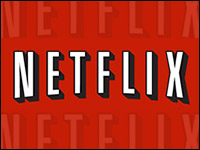
Netflix on Monday updated its “long-term view” of the industry to include a far wider range of competitive factors than it has ever had in the past. The company also adjusted its competitive focus accordingly, taking into account a number of players that it had previously ignored.
In a nutshell, the company said in its statement for investors, it expects that Internet TV will replace linear TV over the coming decades and around the world.
Also, it continued, “apps will replace channels, remote controls will disappear and screens will proliferate.”
In this brave new world, of course, Netflix plans to be the leading provider.
HBO Leads the List
Netflix got into a significant level of detail explaining why it was predicting these trends. For shareholders, though, the main point was this: Because Internet TV would be the driving force, most of the world’s leading linear TV networks, such as HBO and ESPN, will or are already moving into Internet.
These are the providers Netflix sees as its main competitors now — not Hulu and not even Amazon, at least on a primary level. To be sure, Hulu and Amazon are still on the list of competitors; they are just not at the top of the list.
“The network that we think likely to be our biggest long-term competitor-for-content is HBO,” the company said. “In addition to HBO, there are Amazon/Lovefilm/Prime, Hulu, Now TV, and many cable and broadcast networks in various territories.”
Netflix did not respond to our request for further details.
‘They Are Breaking New Ground’
By singling out HBO, Netflix is sending a message not only to HBO but to the rest of the market as well. It is saying, essentially, that it is no longer just a provider of existing content. Instead, it sees itself increasingly as a creator of content as well.
This may seem like big talk for a company that has only produced a handful of original shows, including Lilyhammer, House of Cards, Hemlock Grove, Arrested Development Season 4 and Orange is the New Black.
Even from this small base, however, Netflix has been very strategic with its offerings, Val Wright, principal at Val Wright Consulting, told the E-Commerce Times.
“It used analytics to match that customers who loved the original House Of Cards also loved Kevin Spacey and used that to cast the leading actor for their original series remake,” she said. “They are breaking new ground with business models and customer experience.”
‘It’s Throwing the Gauntlet Down’
Netflix makes clear that it does not plan to let up.
“We’ll continue to grow our original content as we gain scale, confidence and experience,” it said in its update. “With each original, we learn more about what our members want, about how to produce and promote effectively and about the positive impact of originals on our brand.”
Netflix’s chutzpah is impressive, said David Cadden, a professor of entrepreneurship and strategy at Quinnipiac University.
“It’s throwing the gauntlet down,” Cadden told the E-Commerce Times. “Netflix has proven to be a technologically innovative company and one that is able to bounce back from self-inflicted errors Essentially, it’s informing HBO, Amazon and the major networks that it’s moving into the field of content production.”
‘The Shot Across the Bow’
HBO appears to have already recognized the nascent competitive threat that Netflix poses.
Not so long ago, Netflix was seen as existing in a symbiotic relationship with cable channels and networks, noted Lance Strate, a professor of communication and media studies at Fordham University.
“Viewers who previously would write off a program because they missed earlier episodes or seasons would catch up by watching them on Netflix, which would increase viewership for the current episodes on cable,” Strate told the E-Commerce Times.
Now it’s HBO that sees it must push into the on-demand format.
“HBO GO is the shot across the bow, turning the cable channel into a direct competitor with Netflix,” Strate explained. “Netflix’s modified vision statement reflects the new reality where the cable networks are positioning themselves in competition with, rather than complementing Netflix as an online content provider.”
Numerous Hardware Options
Demographics and changes in the marketplace make these shifts inevitable, said TubeStart CEO Josef Holm.
“More young people view online video than they do cable TV, and smartphones have made this trend even more ubiquitous,” Holm told the E-Commerce Times.
“The increasing number of hardware options plays a role too,” he added, pointing to Google’s Chromecast as one example.












































Social Media
See all Social Media